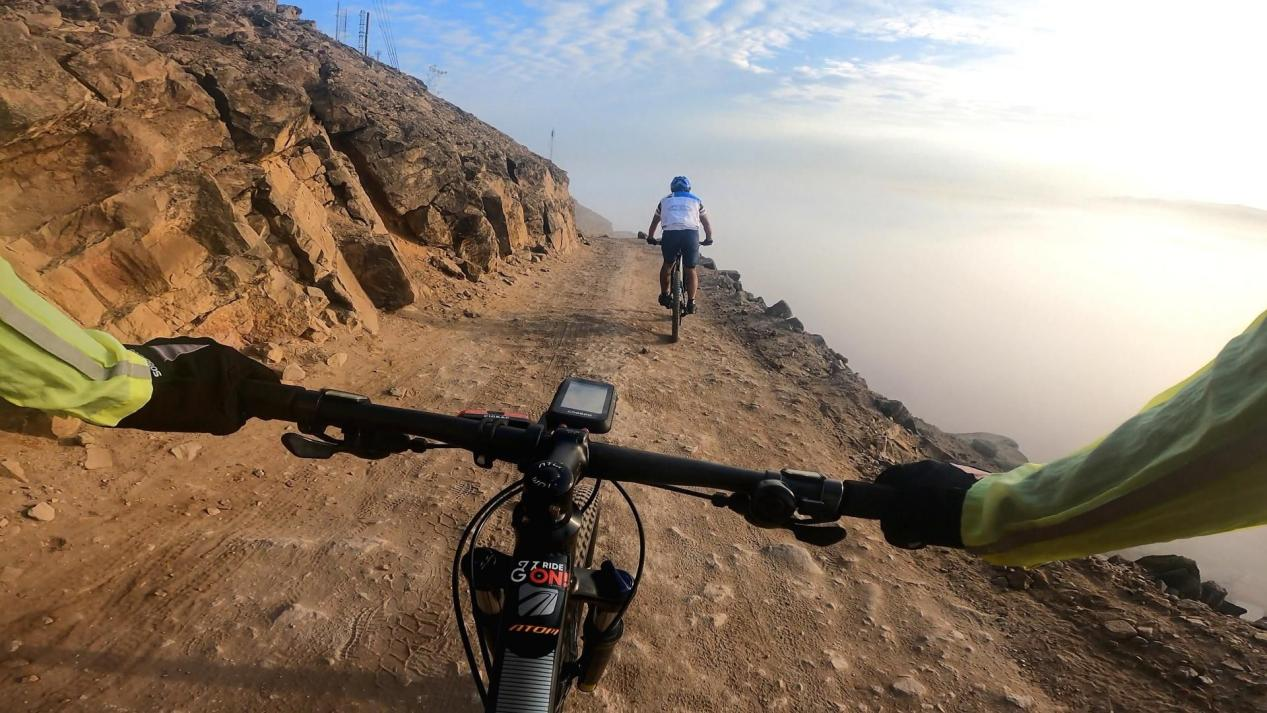What is cadence? How can I improve?
When we first started cycling, it was easy to get lost in all the terminology. We quickly realized that there are many words that can be confusing, especially for beginners. One of these words is "cadence", and it's an important concept to understand if you want to improve your cycling performance.
What is cadence?
Cadence is a basic idea: it's how fast we pedal when we ride, measured in revolutions per minute.
When watching professional cycling races, one can observe that the cadence of the pros is usually very high, especially on flat tracks where it can be 100 revolutions per minute (rpm) or more.
Although most pros pedal a little slower on climbs, their cadence is still much faster than that of the average enthusiast. The average recreational cyclist usually pedals at a rate of between 60-80 revolutions per minute, while the amateur cyclist may reach 80 to 90 revolutions per minute.
Why is cadence important?
Cadence is an important measurement because it affects how powerful our bikes are. Power is calculated by multiplying how hard we pedal (torque) by how fast we turn the pedals (cadence).
For example, if you pedal too slowly (i.e. low cadence), you'll be putting more strain on your muscles and joints, which can lead to fatigue and even injury. On the other hand, if you pedal too quickly (i.e. high cadence), you may not be maximizing your power output, which means you'll be working harder than you need to.
Studies have shown that cycling at a lower cadence typically places more stress on the rider's muscles, while cycling at a higher cadence transfers more of the load to the rider's cardiovascular system.
If a rider has a strong body, they may feel more comfortable pedaling at a heavier gear with a lower cadence. Meanwhile, a leaner rider may prefer using a lighter gear with a higher cadence.
Pedaling hard with a low cadence is more likely to cause muscle strain and soreness than pedaling at a higher cadence in a lighter gear.
Pedaling too fast can cause your bike to wobble, making you pedal slower and tire quickly.
Measurement of cadence
The simplest way to measure cadence is by mentally counting the number of times our legs move up and down in a minute. But to get a more accurate record, we can choose to use electronic devices such as cadence sensors.
Coospo has BK9C cadence sensor. BK9C is crafted with an advanced dual-meter hybrid algorithm. Say goodbye to the need for magnets as this sensor offers real-time cadence measurement with unparalleled precision. Enhance your ride performance and optimize your cycling experience with this cutting-edge technology.
The Coospo cadence sensor can be connected to the Coospo bike computer. This enables you to conveniently view your pedaling data directly through the bike computer while riding.
So you can analyze the cadence data during and after training using the bike computer.

What's the ideal cadence in RPM?
There is no one-size-fits-all answer to this question. The "ideal" cadence will vary from person to person and depend on several factors, such as terrain, riding intensity, distance, and more.
Riders usually find their own perfect pedaling speed. Experienced riders tend to be more exact with this.
To ride better, try different speeds to find what feels best for you. The point of practicing is to pedal with a good rhythm, not just to pedal faster.
When riding, you might need to pedal faster or slower in different situations. Also, practicing at different speeds can help us get better at riding and be ready for different situations.
Training with a higher cadence at lower loads improves our pedaling smoothness, whereas training with lower cadences and higher loads helps to build strength.
Training on a roller table can make our pedaling smoother, while targeted training can improve our ability more quickly than long, aimless rides.
Two exercises for pedaling
1. Training for Pedaling Smoothness and Coordination
20-minute interval training:
Pedal hard for 4 minutes at a speed of 120 rotations per minute. Then, cycle easily for 1 minute. Repeat this 4 times in total, for 20 minutes. Try to keep your upper body still while you exercise to make your core stronger. And put more strength into your pedaling by using your lats.
If you want to, you can do the whole workout again after taking a break.
2. Building strength and stamina
To build our strength, train with low cadence and high power output.
To complete this exercise, ride at a steady pace that feels challenging but doable for two sets of 15 minutes each. During each set, aim for an RPM (revolutions per minute) of 50 to 60, and take a 10 to 15 minute break between sets to fully recover before starting the next one.
As you progress and get better, you can increase the intensity and lower the speed during your exercises.
Conlusion
Therefore, it's important to find the right cadence for you and your riding style. This can depend on various factors, such as your fitness level, the terrain you're riding on, and your personal preference. Some cyclists prefer a higher cadence, while others prefer a lower cadence. Ultimately, the key is to find a cadence that allows you to ride comfortably and efficiently for extended periods of time.
Remember that finding the right cadence for you may take some trial and error. Don't be afraid to experiment with different cadences and see how they feel. With practice and patience, you can improve your cadence and become a stronger, more efficient cyclist.











